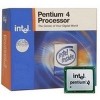Intel BX80532PG3200D Data Sheet - Page 68
Table 13., Power Specifications for the Pentium Processors
 |
View all Intel BX80532PG3200D manuals
Add to My Manuals
Save this manual to your list of manuals |
Page 68 highlights
Thermal Specifications and Design Considerations Table 13. Power Specifications for the Pentium Processors Symbol Processor Number Core Frequency & Voltage TDP T4500 T4400 T4300 T4200 Symbol 2.30 GHz & VCCHFM 2.20 GHz & VCCHFM 2.1 GHz & VCCHFM 2.0 GHz & VCCHFM 1.2 GHz & VCCLFM Parameter PAH, PSGNT PSLP PDSLP TJ Auto Halt, Stop Grant Power at VCCHFM at VCCLFM Sleep Power at VCCHFM at VCCLFM Deep Sleep Power at VCCHFM at VCCLFM Junction Temperature Thermal Design Power Unit Notes 35 35 35 W 1, 4, 5 17 Min Typ Max Unit Notes - - 13.9 W 7.4 2, 6 - - 13.1 W 7.1 2, 6 - - 5.5 3.2 W 2, 5, 7 0 - 105 C 3, 4 NOTES: 1. The TDP specification should be used to design the processor thermal solution. The TDP is not the maximum theoretical power the processor can generate. 2. Not 100% tested. These power specifications are determined by characterization of the processor currents at higher temperatures and extrapolating the values for the temperature indicated. 3. As measured by the activation of the on-die Intel Thermal Monitor. The Intel Thermal Monitor's automatic mode is used to indicate that the maximum TJ has been reached. 4. The Intel Thermal Monitor automatic mode must be enabled for the processor to operate within specifications. 5. At Tj of 105 oC 6. At Tj of 50 oC 7. At Tj of 35 oC 68 Datasheet















